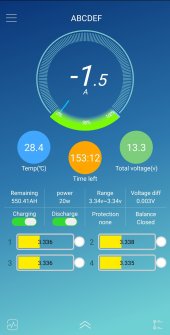At risk of stating the obvious, this is the way I think about shunts and why the method used for measuring voltage is different from measuring amps:I hope that I can get clarification on why I need a shunt on my system?
I understand the basic functions of a shunt and in my mind that is to work with a Amp meter to determine the amperage/current being used.
My system has 4-200Ah cells placed together to form a 12Volt battery.
On the positive side I have a 150Amp flat fuse on the end of a 35mm welding cable which is connected to the battery.
The positive battery cable then runs to a DC on off switch and to a 150Amp Amp/Volt meter then to a Positive Bus Bar.
On the negative side the battery is connected to a 100Amp BMS then runs to a negative Bus Bar.
I hope I have this right my mind does faid out from time to time.
Thanks in advance.
- Voltage is measured Across the circuit, so you just put your meter's probes directly on + and - to measure, whereas
- Amps are measured flowing Through the circuit ie. in-line with the circuit. This means that you need to either
- break the circuit and put a shunt in-line with it which you then measure the current flow through, or
- put a ring around one of the wires (such as by a clamp meter) where the current if flowing and measure it indirectly by inference



